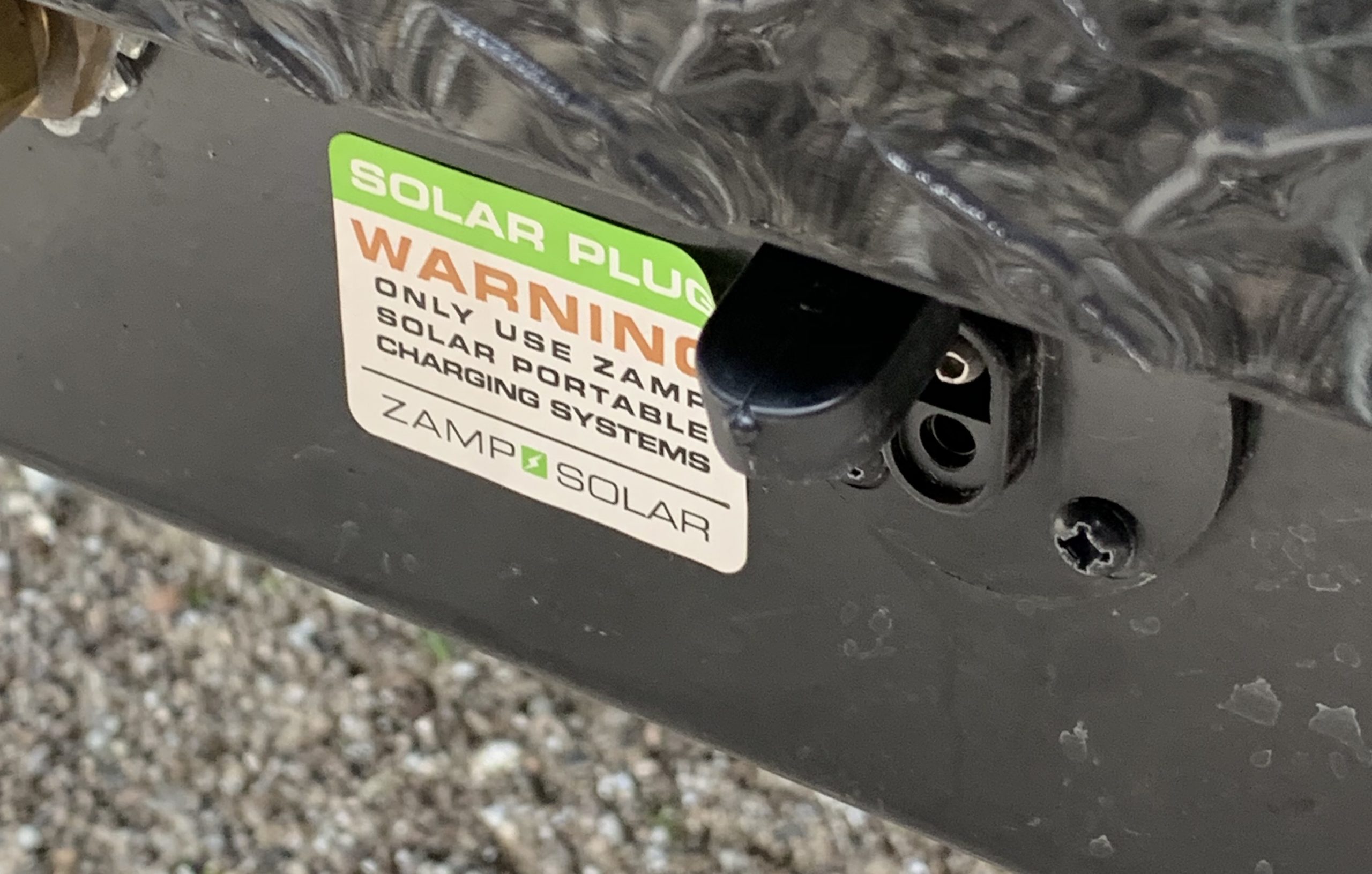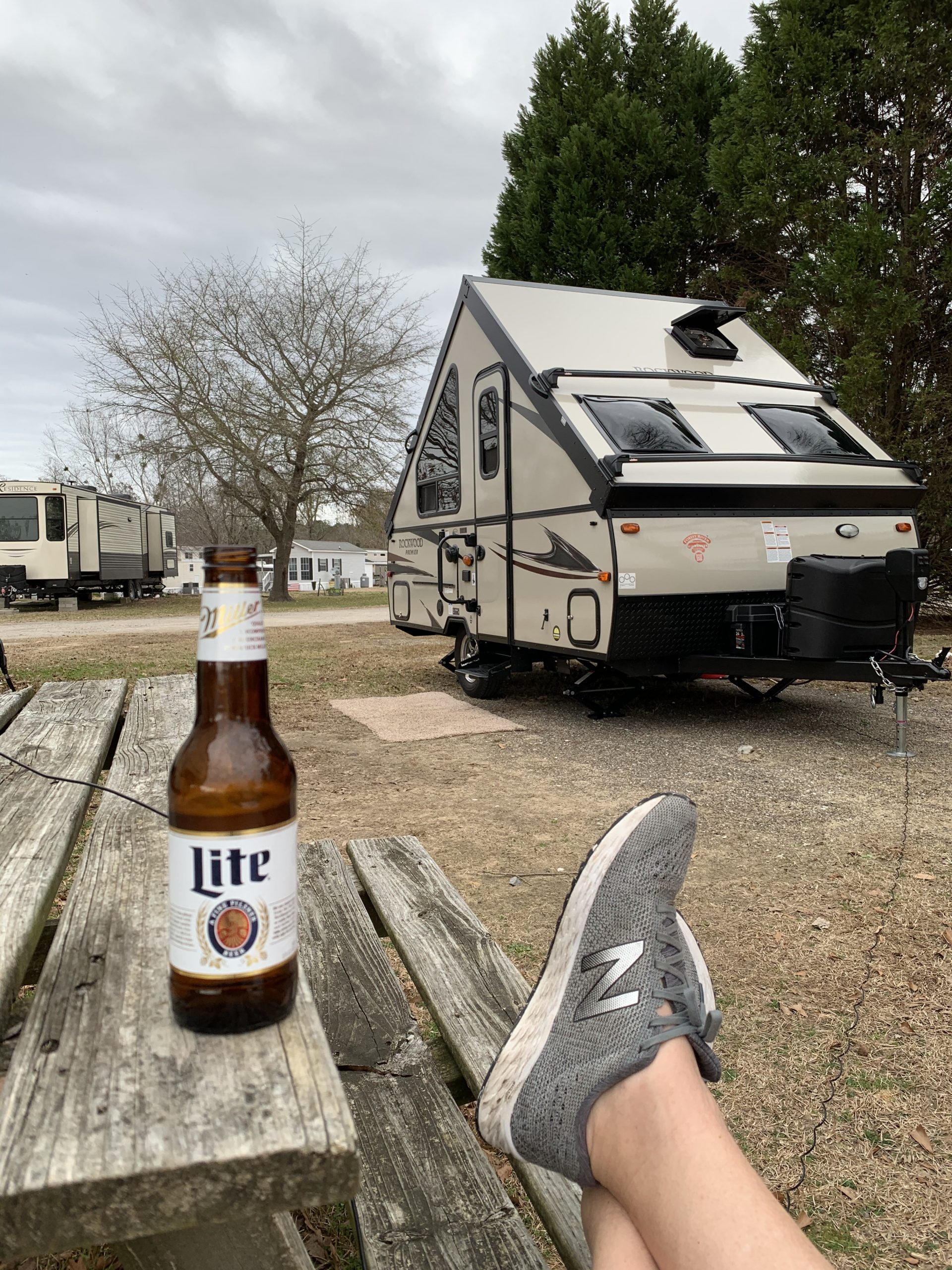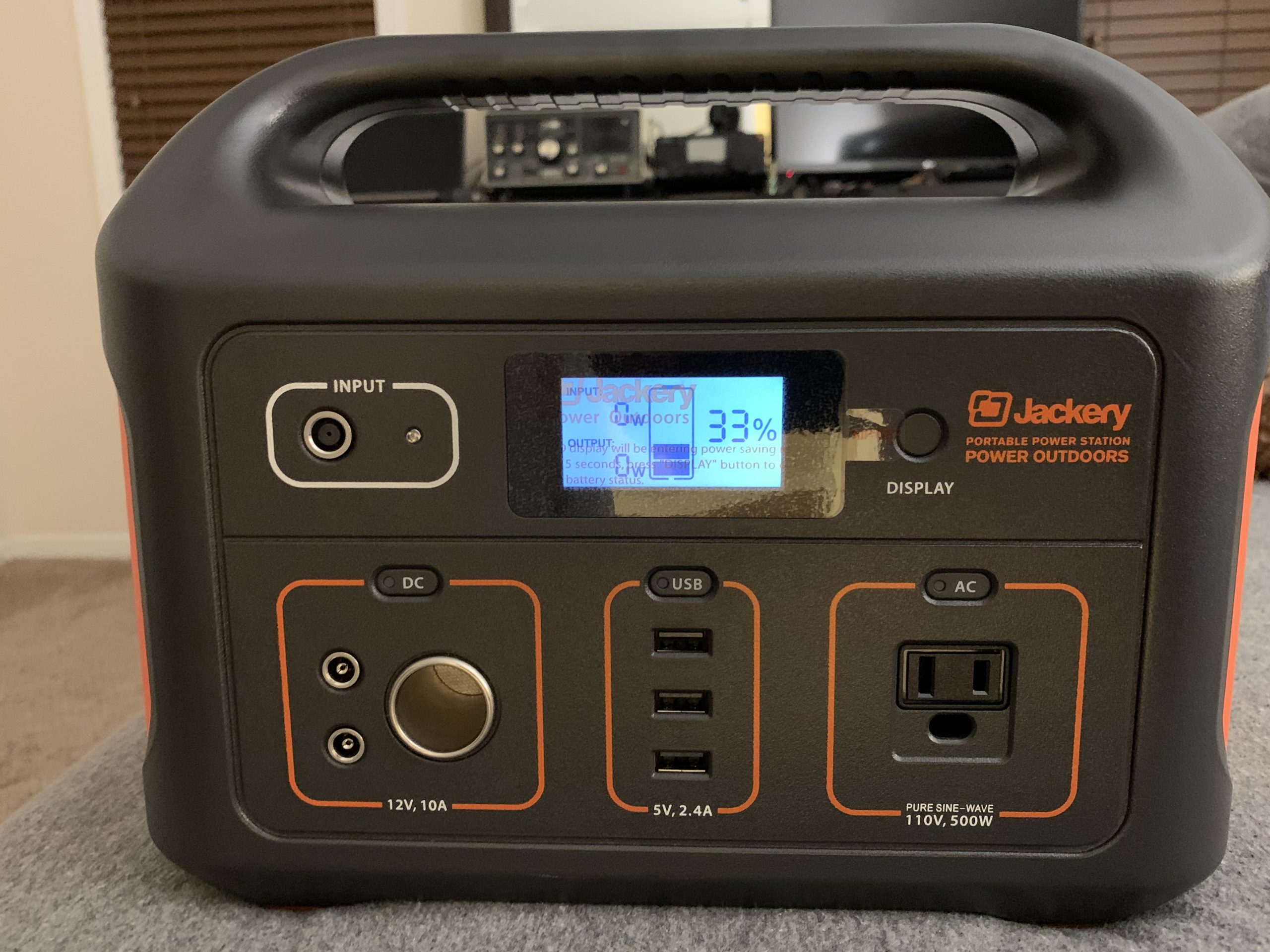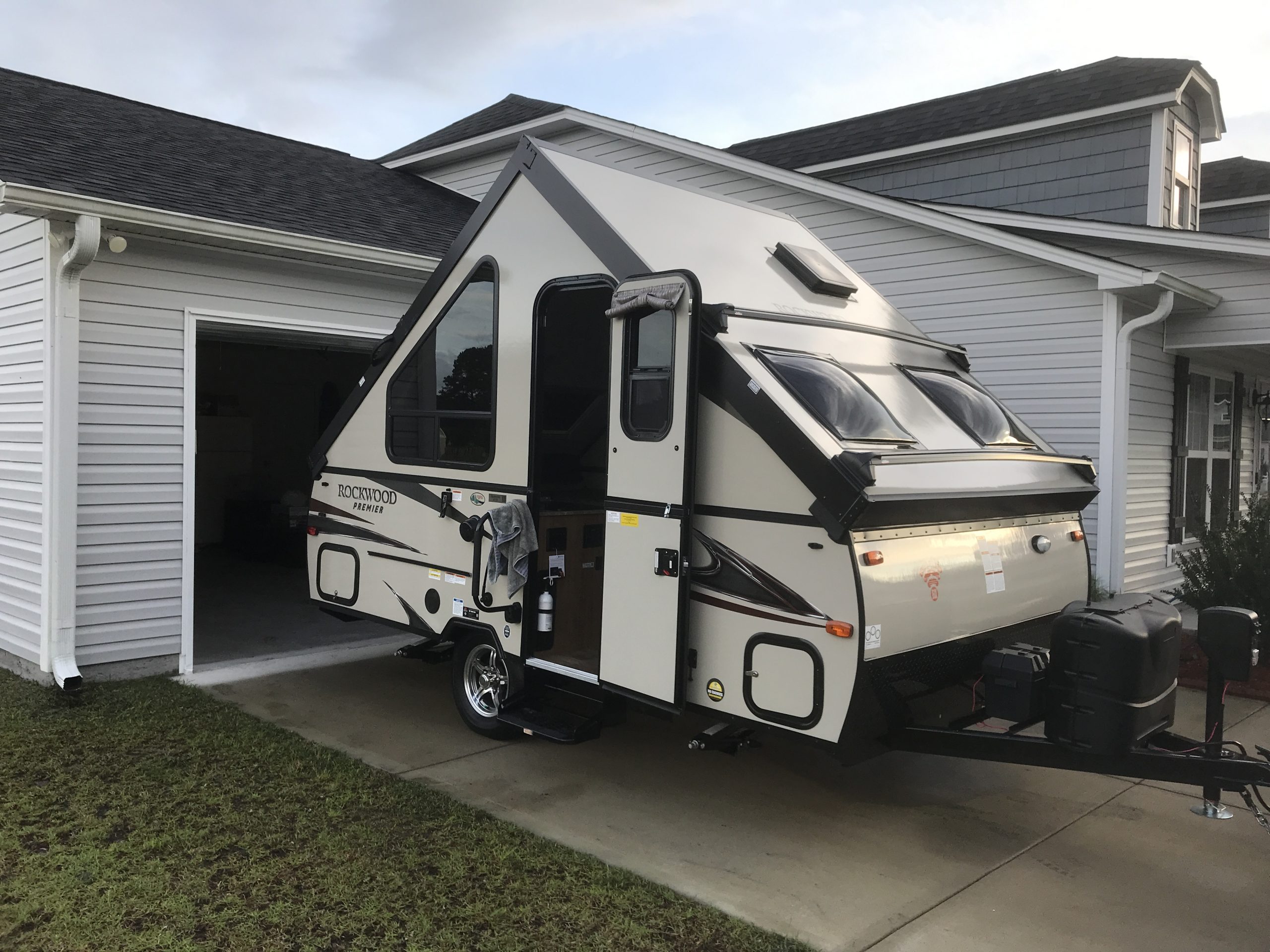If you go look at campers there almost always is a sticker on the camper or the dealer will tell you it is “Solar Ready”.
Wow! Sounds cool. Let’s delve into what that means. In the case of my camper, a Rockwood A122 pop up A Frame camper it means there is a 2 pin connector, SAE style located on the frame.

Zamp SAE style Solar Connector
The top pin (male) is wired to the battery and the bottom pin is wired to the frame (ground). Note that the sticker says to only hook it up to a ZAMP Solar Charging System. Okay. If you look at the ZAMP systems they are basically a suitcase solar panel with a charge controller on them. They want like $700 for them. It’s crazy.
If you go to Amazon you can get a 100 watt Renogy Solar Suitcase with a waterproof charge controller for about $240. That’s a no brainer. What’s the catch?






